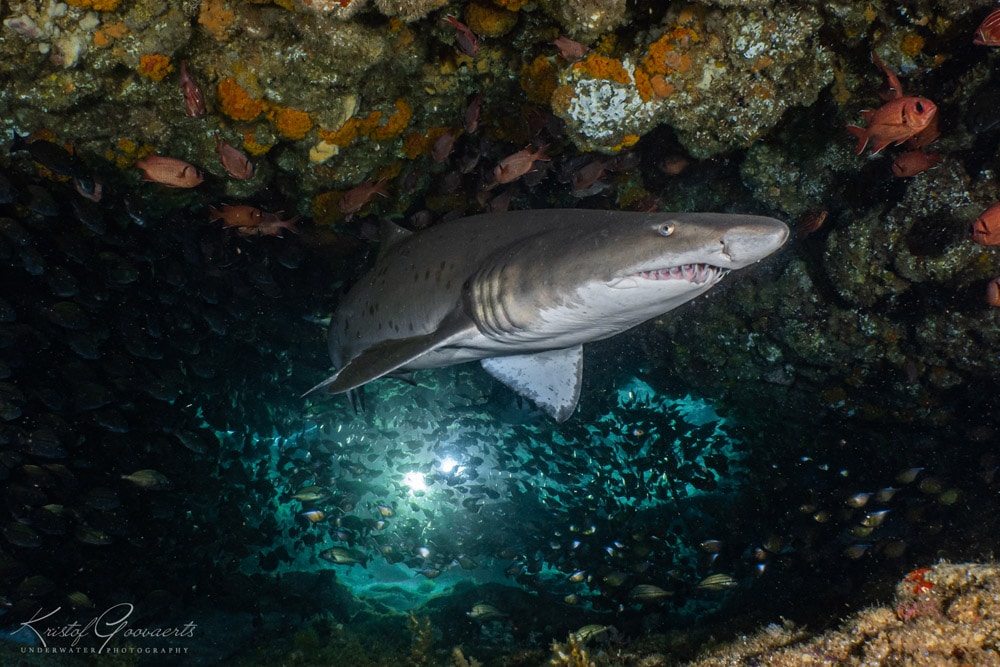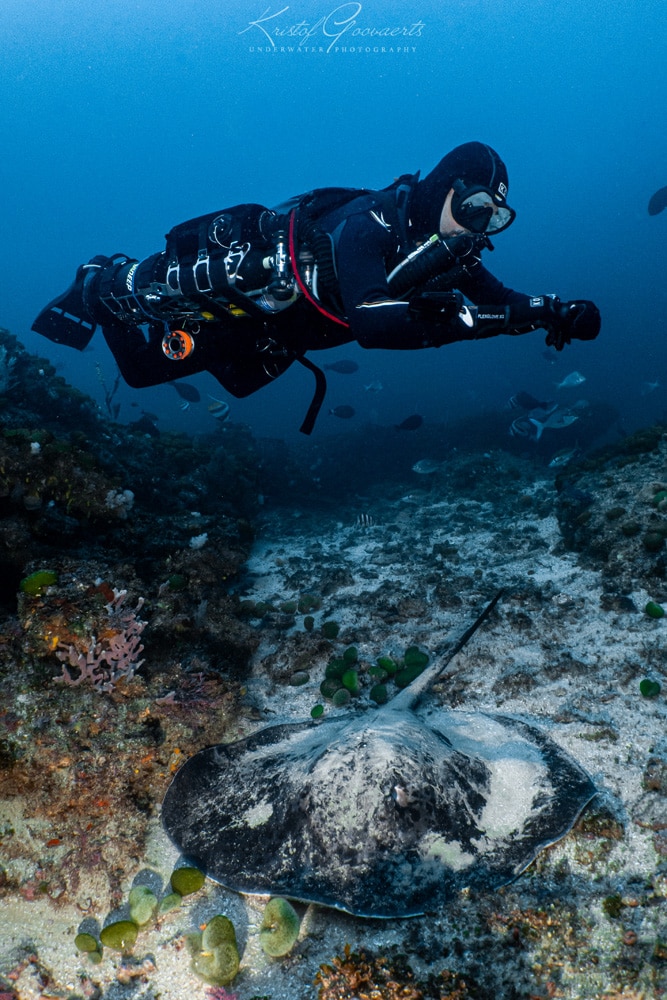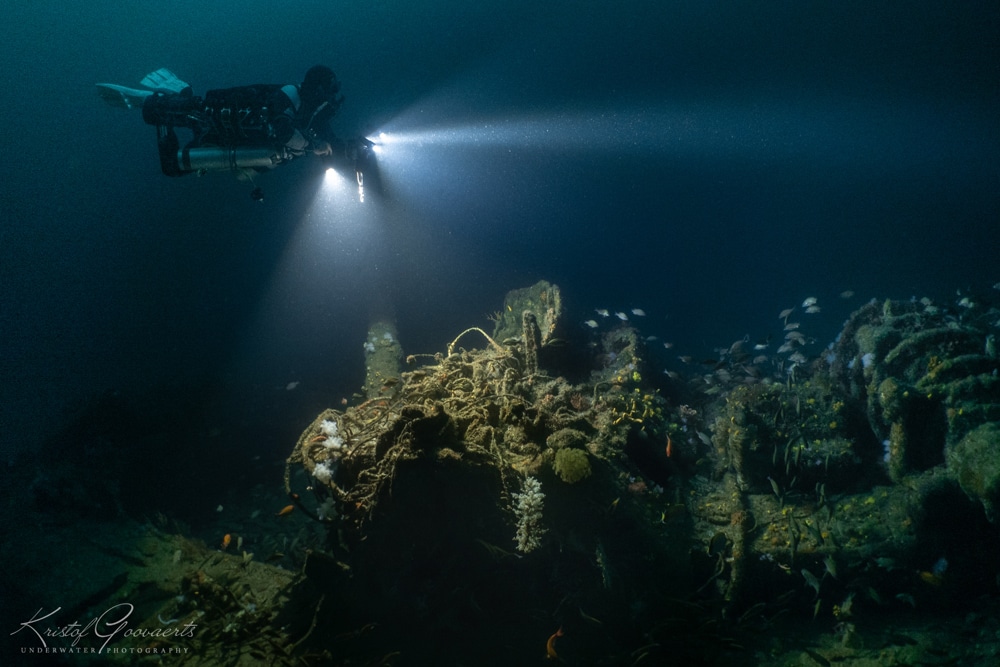News
The diversity of the South African Kwa-Zulu Natal South Coast

If you know anything about diving in South Africa, you probably know that you can expect to see a wide variety of sharks. From the Great Whites, Makos and Blue sharks in the Western Cape to the Tigers, Ragged tooth (Sand Tigers/ Grey Nurse) and Bull Sharks in Kwazulu-Natal. You have probably also heard of Aliwal Shoal, a reef structure approximately 5km off the Kwazulu-Natal Coast, usually dived from the towns, Umkomaas and Scottburgh.
People travel from all over the world to dive on Aliwal Shoal. When they get there, they discover the region has so much more to offer. Yes, there are the wild game safaris, incredible local craft breweries and a host of other tourist activities. But let’s focus on the diving.
The fossilized sand bank of Aliwal Shoal is home to a wealth of diverse sea life. Apart from the sharks, whales, dolphins and rays, you are likely to encounter hundreds of different species of sub-tropical creatures.
This rocky reef structure presents you with exciting pinnacles, drop-offs and caverns, which during the right time of year, are usually filled with docile Spotted Ragged Tooth Sharks. Dozens of interesting dive sites like Raggie’s Cave, Cathedral, Shark Alley and Manta Point are some of the most frequented by divers.
Of course, with a reef structure that has pinnacles as shallow as 6 or 7 meters, ships were bound meet their demise. Two incredible wreck dives in the area are “The Nebo” and “The Produce”. The wrecks themselves are both interesting and unique, but one of the most incredible sightings divers look forward to seeing, are the enormous Brindle Bass, also known as the Giant Grouper. Growing up to 2.7 meters, they are definitely a giant fish that can be a little nerve-racking to bump into.
To the south of Aliwal Shoal there are even more dive sites that offer not only an abundance of typical sea life but the opportunity to see some of the rarest marine animals.
In November 2019 a team of divers recorded a Coelacanth on a deep wall. The Coelacanth, “Dinosaur Fish”, was once thought to be extinct. However, there have been numerous sightings of the fish on the South African coast, mainly in Sodwana Bay north of Aliwal Shoal, which makes this particular find very interesting.
The elusive and elegant Thresher Shark has been seen on a number of occasions, most notably at a site called Allen’s Cave. This dive site with a maximum depth of 36 meters features some incredible rock formations with gullies, ledges and swim-throughs. During the Ragged Tooth Shark season, there are often sharks resting inside the swim-through.
Umzimai Wall is a site dived less frequently which means that divers are spoiled with inquisitive and curious marine animals. It’s the huge wall and fascinating reef structure that really is the star of the show. Although you can spend a great deal of time at 25m on this reef, the wall descends down to 40 meters. As with many of the deep reefs in this area, you will see long spiraling whip corals that will dwarf many a diver.
Other notable dive sites south of Aliwal Shoal include Landers; Half Acre; Butchers and Fern Reef, all with unique and interesting attractions.
If you’re into some deep wrecks, there certainly are a number in the area that will no doubt impress. The Griqualand is one such wreck that lies in 52 meters of water north of the Aliwal Shoal reef system. At almost 500 tons, this steamer, which sank in 1970, requires more than one dive to truly appreciate all it has to offer. Divers can swim along its mast, that is still intact, and lays across the sand while witnessing a large school of Daga Salmon darting around the wreck. Look out for the enormous Brindle Bass that could be hiding in the shadows of one the holds. And of course, keep an eye out for the sharks that often visit while you’re doing your decompression.
If the weather isn’t great for diving or if you just need to dry out your gills, there are a multitude of activities to keep you busy. Divers visiting South Africa will enjoy seeing the marine big five, but don’t forgot about the big five land animals. A trip to South Africa will not be complete without a visit to some of the best wildlife viewing the world has to offer. Many parts of the country have world-class lodges and camps nestled in the bush affording visitors an unforgettable wildlife experience.
The adventurous could go on hiking or mountain-biking trails, ziplining, bridge swinging or even river rafting. Those that prefer a slower pace can enjoy a round of golf at one of the many golf courses in the area.
Whether you are an entry level diver or an advanced technical rebreather diver, there is something for everyone and enough to see to keep you busy for weeks. South Africa is an incredibly diverse nation with so many attractions whether on land or underwater, that you are spoiled for choice. The hard part is deciding where you want to visit first.
Images: Kristof Goovaerts
Article by PJ Prinsloo – www.pjptech.co.za
Gear News
Introducing the TR-80, IR-50 and CS-30 Regulators from DYNAMICNORD

Whether you are a beginner or a professional diver – with the three new main regulators from DYNAMICNORD, everyone will find their favourite regulator. They all look super stylish.
Excellent performance with the TR-80
Quality and performance are the be-all and end-all for regulators. It is not for nothing that the TR stands for Tec Reg. The innovative design of the TR-80 guarantees absolute reliability – even in ice-cold waters.

Perfect breathing effort at 0.8 J/l / certified for diving in waters below 10 degrees / structural design made of solid brass for best cold protection / membrane-compensated design with dry seal of the first stage / reduced exhalation effort thanks to optimized exhalation membrane and bubble deflector / adjustable Venturi (dive/predive) and adjustment knob for individual inhalation comfort / innovative design of the front cover prevents free-flow in strong currents or when diving with scooters / design made of sandblasted brass, matt chrome finish / 2 HP and 4 LP outlets / mouthpiece made of high-quality, anti-allergic silicone for maximum comfort.


Amazing underwater adventures with the IR-50
The IR-50 is the top regulator for advanced and experienced divers. Natural breathing is the essence of this regulator.

Ideal breathing effort at 0.8 J/l /certified for diving in waters below 10 degrees / compensated membrane / adjustable venturi (dive/predive) and adjustment knob for individual inhalation comfort/ outlet valve and deflector for minimum exhalation effort and reduction of bubbles on the face / design made of sandblasted brass, matt chrome finish / 2 HP and 4 NP outlets / mouthpiece made of high-quality, anti-allergic silicone for maximum comfort.


The Workhorse – our CS-30
For diving centres and diving beginners – the workhorse stands for strong construction, reliability and robustness. Perfect for your training.

Optimal breathing effort at 0.8 J/l /recommended for diving in waters above 10 degrees / non-compensated piston / adjustable venturi (dive/predive) / outlet valve and deflector for minimum exhalation effort and reduction of bubbles on the face / design made of sandblasted brass, matt chrome finish / 1 HP and 3 NP outlets / mouthpiece made of high-quality, anti-allergic silicone for maximum comfort.


Octopus OP-30
The OP-30 is the ideal addition to all DYNAMICNORD regulators. It is identical in construction to the CS-30.

The TR-80, IR-50, CS-30 (DIN & INT) regulators and the Octopus OP-30 are available from DYNAMICNORD dealers and in the online store.
DYNAMICNORD – Your Outdoor Companion.
Marine Life & Conservation
Paul Watson Released as Denmark Blocks Japan’s Extradition Bid

Renowned anti-whaling activist Paul Watson has been released from custody in Greenland after spending five months in detention. Denmark’s Justice Ministry rejected Japan’s request for his extradition, citing insufficient guarantees that his time already served in custody would be credited against any potential sentence.
The 74-year-old Canadian-American was arrested on July 21 in Nuuk, Greenland’s capital, when his ship docked to refuel. His arrest was based on a 2012 Japanese warrant related to a 2010 encounter in Antarctic waters. Japan alleged Watson obstructed operations and caused damage to a whaling research ship during efforts to disrupt illegal whaling. Watson has consistently denied these claims, maintaining his commitment to marine conservation.
Denmark, which oversees extradition matters for Greenland, concluded that while the legal conditions for extradition were met, the lack of assurances from Japan regarding time-served credit made extradition untenable.
In a video shared by his foundation, Watson expressed gratitude and relief, saying, “After five months, it’s good to be out… and good to know they’re not sending me to Japan.” He added that the most difficult part of his time in custody was being separated from his two young sons.
Watson is a pioneering figure in marine conservation, known for founding the Captain Paul Watson Foundation in 2022 after decades of activism with the Sea Shepherd Conservation Society. His bold efforts to defend marine life have earned him widespread support, including from celebrities and conservationists. His work has also been featured in the acclaimed reality TV series Whale Wars.
Watson’s lawyer, Jonas Christoffersen, praised the decision, stating, “We are happy and relieved that Paul Watson is now free.” He added that Watson is eager to reunite with his family and continue his vital work.
The arrest occurred while Watson’s vessel, the M/Y John Paul DeJoria, was en route to the North Pacific with a team of 26 volunteers to intercept a Japanese whaling ship. His foundation described the arrest as politically motivated and emphasized that Watson’s actions were focused on ending illegal whaling practices.
Japan resumed commercial whaling in 2019 after leaving the International Whaling Commission, asserting that whale meat is a cultural tradition. Conservationists, however, continue to challenge these practices, highlighting their impact on marine ecosystems.
Despite the challenges, Watson remains steadfast in his mission to protect marine life and bring attention to whaling practices. His dedication to ocean conservation has made him a globally respected advocate for the environment.
-

 News2 months ago
News2 months agoIconic SS United States to become the World’s Largest Artificial Reef
-

 News3 months ago
News3 months agoBook Review – 52 Assignments: Underwater Photography
-

 Gear News3 months ago
Gear News3 months agoDYNAMICNORD – New German diving brand enters the British market
-

 News3 months ago
News3 months agoExploring Cenote El Pit: A Diver’s Dream
-

 Gear News3 months ago
Gear News3 months agoTry BARE drysuits (and maybe even win one!) this Friday with Sea & Sea at North West Dive Fest
-

 Marine Life & Conservation3 months ago
Marine Life & Conservation3 months agoBook Review: Coral Triangle Cameos
-

 Blogs2 months ago
Blogs2 months agoDive the Egyptian Red Sea this Autumn with Regaldive
-

 News3 months ago
News3 months ago2024 Ocean Art Underwater Photo Competition Announced





















